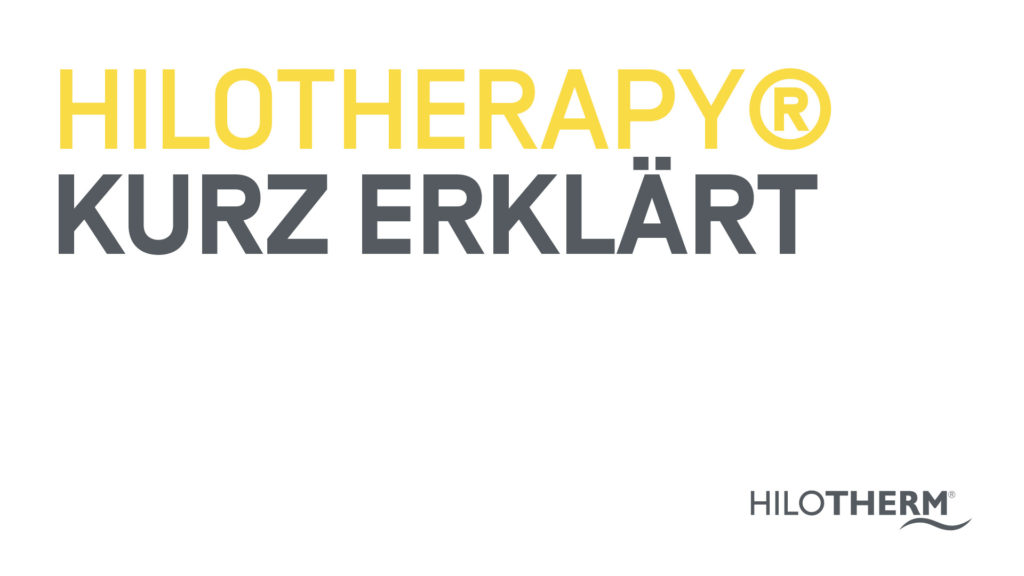Particularly in my hands, the feeling of numbness and the pains I had in my joints and tendons have almost completely disappeared. I put this miraculous improvement down to using your cooling glove-type hand cuffs. I often think back to the chemotherapy sessions when I was in treatment, which would go on for up to 8 hours, and how they would be so much more tolerable because I was now able to read. Before using this treatment, reading would have been unthinkable if I was using the ice packs that were offered to me at the clinic. Now I hope that, with time, I’ll regain the sensitivity that I previously had in my feet.
HILOTHERAPY® ChemoCare CIPN
The effective cooling treatment
HILOTHERAPY® is a physical cooling-treatment. With it’s degree-precise cooling mechanism for hand and feet it is applied in onocology to prevent side effects of chemotherapies. The HILOTHERAPY® prevents painful and often times irreversible chemotherapy-induced polyneuropathy (CIPN) or hand-foot-syndrome (HFS).
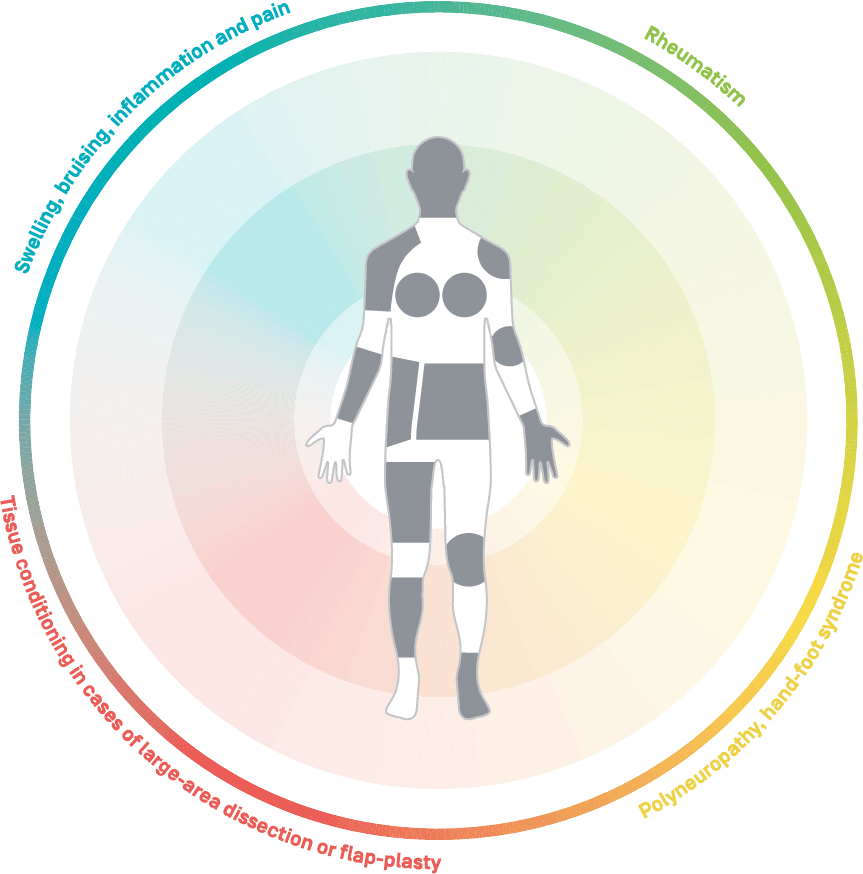
The problem:
Diagnosis cancer – chemotherapy – CIPN
Despite innovative targeted therapy approaches, chemotherapy is still one of the most important therapeutic components in the treatment of cancer. It contributes to improving the long-term prognosis of oncological patients, but also causes side effects. Chemotherapy-induced polyneuropathy (CIPN) is a frequent complication of many antineoplastic system therapies.
The danger: CIPN > Grade 2
- Therapy postponement
- Dose reduction
- Termination of therapy
- Deterioration of the long-term prognosis (outcome)
- Deterioration of quality of life for many years and often irreversible
Studies show: high incidence rates.
The incidence rate of CIPN (grades 1-3) is significantly higher than previously thought, at 74.4% (Blackley et al, 2019).
- 33% grade 2/3 toxicities with three weeks of Taxol administration (Seidmann et al., JCO 2008)
- 51% grade 2/3 toxicities with weekly paclitaxel administration (Seidmann et al., JCO 2008)
- 27% ≥ grade 2 toxicities with paclitaxel weekly (Sparano et al., N Engl J Med 2008)
Any further questions or further enquiries?
The Solution:
HILOTHERM® ChemoCare CIPN
Controlled cooling of the extremities during chemotherapy.
HILOTHERAPY®
The world’s first processor-controlled hand/foot cooling to prevent CIPN
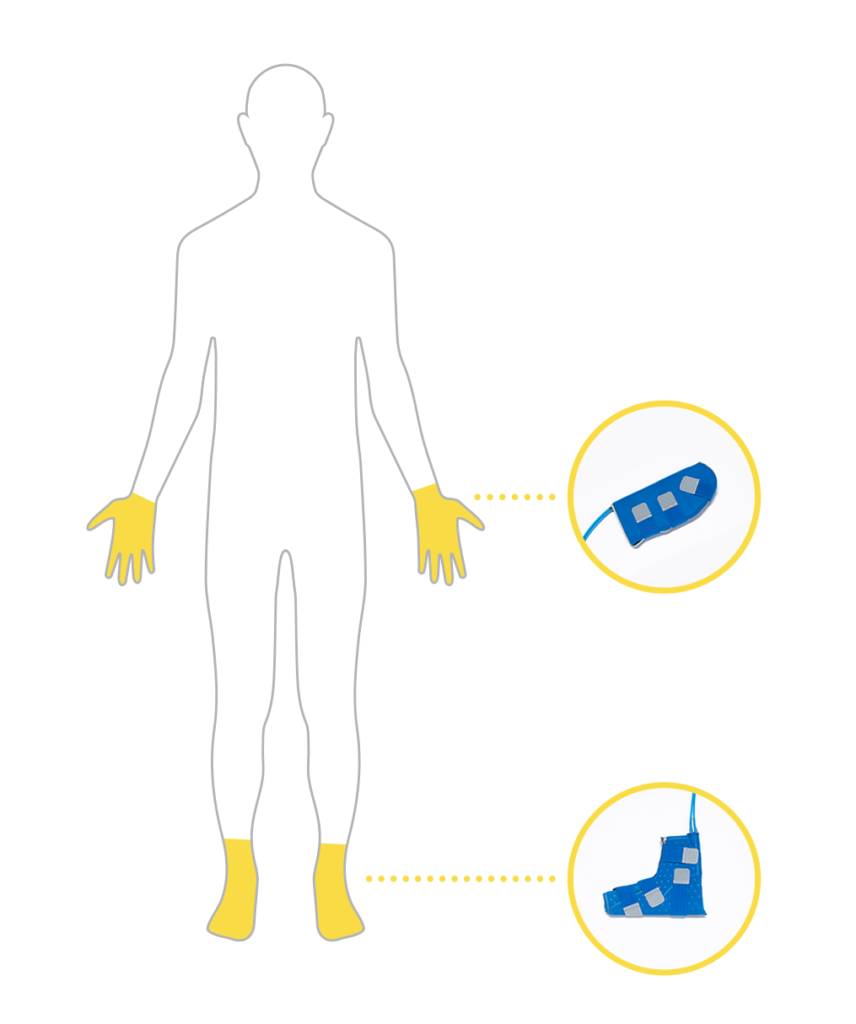
Advantages:
Efficacy:
Our data prove the prophylactic effectiveness of HILOTHERAPY®.
Without prophylactic HILOTHERAPY® 90% of all patients inside develop symptoms of CIPN and Hand-Foot-Syndrom (Grade 1 – 3) – 50% of them severe (Grade 2/3).

Cross your heart. You try to do everything possible to reduce side effects of chemotherapy and better quality of life for your patients.
About the disease
Polyneuropathy (CIPN) / hand-foot-syndrome (HFS)
Chemotherapy is the most-feared of the treatments available to cancer patients. There is a great deal of fear due to the typical side effects: nausea, vomiting, possible infections, hair loss and, last but not least, the development of painful nerve damage in the hands and feet (polyneuropathy – CIPN). Whilst patients recover quickly from many side effects once chemotherapy has been completed; in the case of CIPN (chemotherapy-induced polyneuropathy) patients are often faced with a long-term complication that continues over several years, significantly impacting their quality of life. CIPN particularly occurs in patients treated with taxane-containing drugs and platinum analogues. Other drugs, such as vinca alkaloids (incl. vincristine, or more rarely, vinblastine and vinorelbinel, 5- fluoropyrimidines (5-FU, capecitabinel, cvclophosphamide, cytarabine, doxorubicin, sorafenib and sunitinib may lead to these complications to a greater or lesser degree.
A medical problem
- Up to 50% of patients develop severe HFS and polyneuropathy
- Patients are often forced to postpone therapy, or take a reduced dose (from just 2nd degree complications);
- some patients are even forced to stop treatment entirely.
- Complaints that can even persist years after therapy;
- it is not uncommon for symptoms to be irreversible.
Symptoms of polyneuropathy/ hand-foot syndrome
Polyneuropathy manifests itself as hypersensitivity to stimuli, pain, burning and/or tingling in the hands and feet, loss of sensitivity (numbness), in some cases with associated problems relating to coordination of movement and balance. Those affected are barely able to distinguish between hot and cold, or this ability may even be lost completely. The primary effects include paraesthesia (abnormal sensation in skin] and pains. A special form of the disease, hand-foot syndrome, occurs when there is an associated inflammatory skin reaction in the hands and feet. Complaints are varied: painful areas of red skin, burning sensations (sometimes with skin abrasions), excess sensitivity to pain and at later stages, even numbness.Where acute symptoms present during chemotherapy, the treatment intervals must often be extended, the dose reduced, and, in the most severe cases, the treatment discontinued entirely.
Grade 1: Tingling, painless swelling or erythema of the hands and/or feet, or complaints that do not impact on the patient’s everyday activities.
Grade 2: Painful erythema and swelling of the hands and/or feet, and/or complaints that impact on the patient’s everyday activities.
Grade 3: A moist peeling of the skin, ulceration, blistering and severe pain in the hands and/or feet, and/ol severe symptoms which make it impossible for the patient to work or carry out the activities of daily life.
How does it come about?
Polyneuropathy
The mechanism by which polyneuropathy occurs relies on two processes:
- direct damage to sensory neurons (nerve cells) due to the chemotherapy drug, partly due to oxidative stress, which is triggered by the drug.
- Inflammatory processes in the nervous system. Where exactly the damage occurs to the sensory neurons depends primarily on the specific chemotherapy drug administered.
In addition to the classical chemotherapy drugs, even new targeted approaches (e.g with antibody conjugates) similarly lead to CIPN (Younes, Clin Oncol, 2012], a fact which is indicative of the continuing and even increasing relevance of CIPN as a side effect of oncological therapies.
According to current understanding, the cause behind these symptoms is blood supply through enlarged capillaries to the nerve cells of the sensory nerve system. There is a different protein composition of the capillary cell wall, which becomes more permeable to certain chemotherapy drugs. This leads to the drugs causing significant damage to nerve cells.
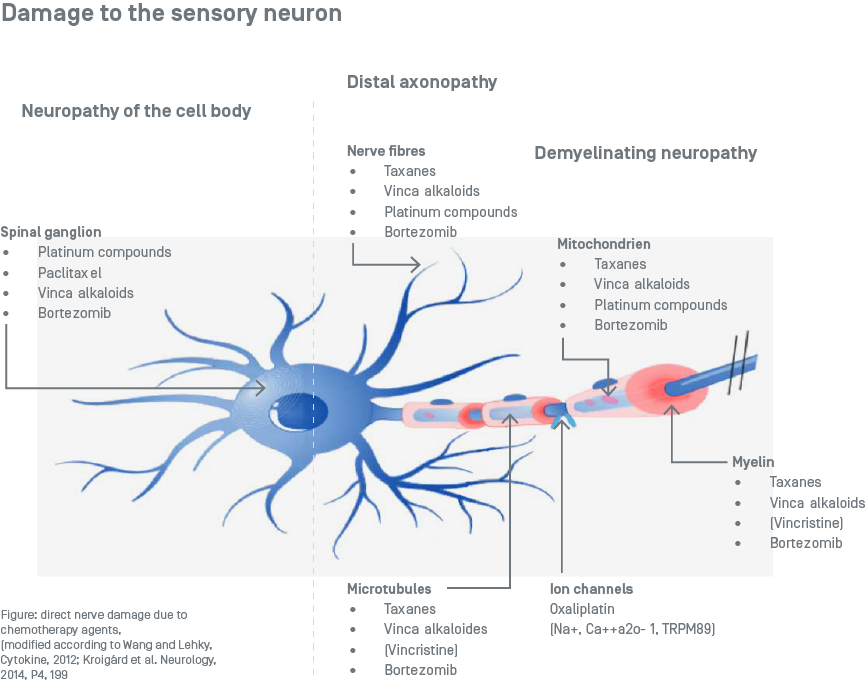
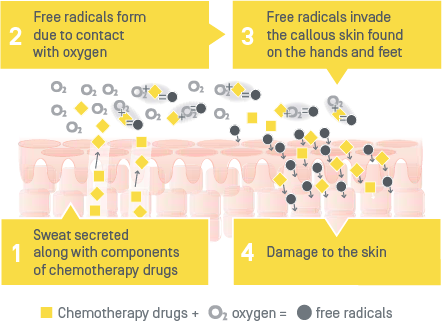
The exact mechanism through which hand-foot syndrome develops is not fully understood. It is assumed that a proportion of the chemotherapy drugs are released onto the skin surface via the sweat glands where it contacts with oxygen to form “free radicals”. These free radicals damage tissue cells of the skin, with damage being particularly severe where the skin has a more callous quality and the substances are absorbed like a sponge: on the palm of the hand and the sole of the foot.
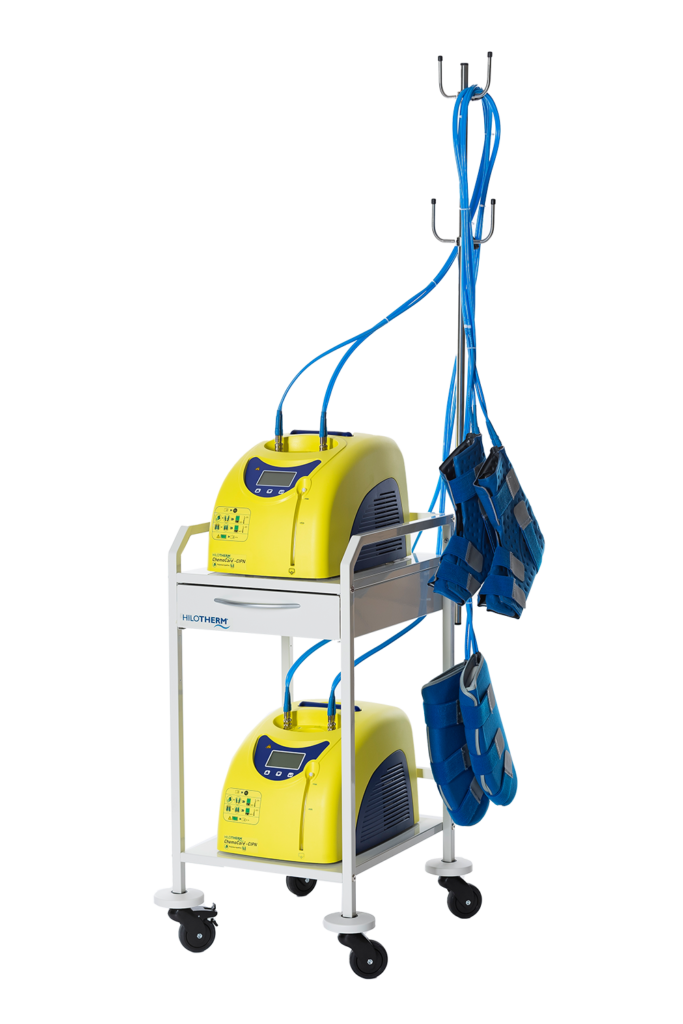
Using the device
HILOTHERAPY® functions using a combination of the HILOTHERM ChemoCare CIPN device, specially-designed cuffs for hands and feet, and a closed-loop circulation system through which a cooling medium flows. The processor-controlled unit ensures a stable temperature for the entire duration of the treatment, even over a period of many hours.
Controlled cooling of the extremities during chemotherapy.
For the prevention of Polyneuropathie (CIPN) and Hand-Foot-Syndrom (HFS) both hands and feet are being cooled during every chemotherapy treatment.
Simple. Compatible. Highly effective.
Studies show:
Without prophylactic HILOTHERAPY® 90% of all patients inside develop symptoms of CIPN and Hand-Foot-Syndrom (Grade 1 – 3) – 50% of them severe (Grade 2/3).
Get the best results when starting with the first chemotherapy treatment:
The earlier you start HILOTHERAPY®, the better. Grade 2 and 3 toxicities can be be greatly reduced or avoided.
FAQ
The ChemoCare device has been developed for use in in-patients in hospitals and clinics and is applied before, during and after a chemotherapy treatment session. Hospitals/clinics can buy a device outright, with finance, or on a lease. Simply get in touch with one of our team.
We would be delighted to contact your doctor in order to make it possible for you to use the device. Please get in touch with one of our team.
HILOTHERAPY® is used immediately prior to, during, and following a chemotherapy treatment session at the respective clinic/hospital.
Unfortunately, the German statutory health insurers do not cover costs for this treatment. We would also be delighted to give vou turther intormation regarding costs tor the treatment.
